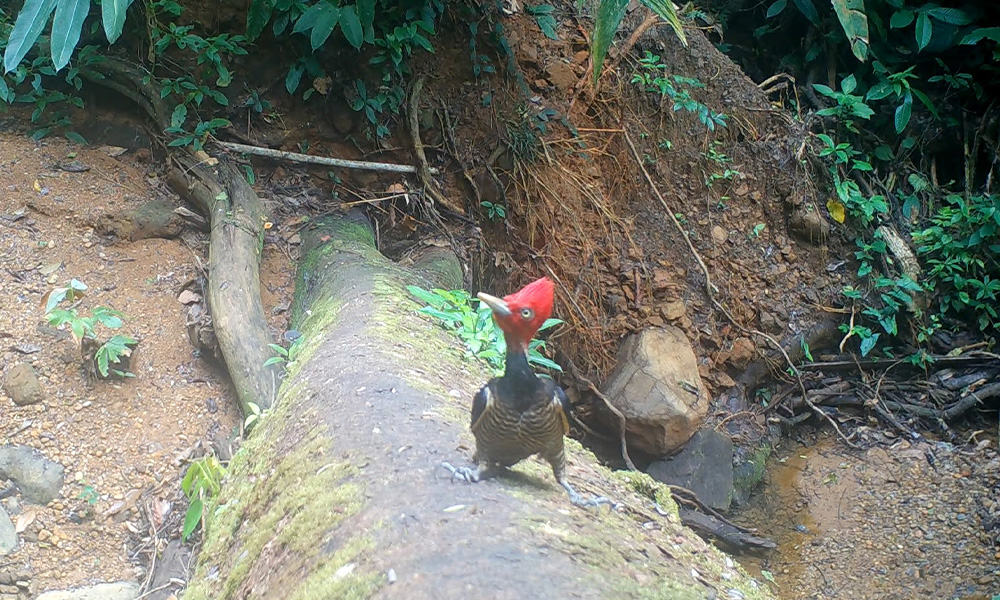Some of Costa Rica’s species are more easily identified by sound than by sight. Mantled howler monkeys’ guttural roars are an easy example. The soulful whistle of the thicket tinamou in the evening is one of my favorite songs from nature. Two hollow drumbeats echoing across the forest signals the presence of today’s feature creature, the pale-billed woodpecker.
The pale-billed woodpecker (Campephilus guatemalensis) is known as the carpintero picoplata in Spanish. Both names refer to its ivory bill which is important to note because this bird shares its Tico territory with a doppelganger, the lineated woodpecker which sports a dark bill.
You’re not going to be confused when you spot a pale-billed woodpecker, your brain will immediately scream, “Wow! That’s a big woodpecker!” They’re large, they have the woody woodpecker-esque red head, and they’re often doing woodpecker stuff like hopping vertically up tree trunks and pecking away at decayed wood.
Pale-billed woodpeckers are widely dispersed in Costa Rica, only being absent at high elevations. They frequent the middle to high levels of the forest. They will visit forest edges and semi-open areas but don’t seem to do well in extensively deforested regions.
The ‘boom, boom!’ double drum beat of the pale-billed woodpecker can be heard at great distances. If you spend a little time in close proximity while they’re foraging, you’ll hear their rather harsh call which can be described as a bleating nasal rattle. In general, woodpeckers aren’t known for the beauty of their calls. You’ll also hear them tap, tap, tapping away at decaying limbs in search of wood-boring beetles and their larva.
Where there’s one pale-billed woodpecker, there’s usually a second. They generally travel year-round in pairs. While they spend their days foraging together, all of the literature about these birds points out that they spend their nights separately in different tree holes, apparently needing a little space after spending the whole day together. In Costa Rica, they mate between August and December. They lay a clutch of two eggs in a cavity in a tree somewhere between 16 to 50 feet off the ground.
I always consider it a treat to see these birds in the wild while checking camera traps. I like that they’re so big. Usually I’ll hear their harsh call or the sound of them tapping away in search hidden bugs, and I’ll follow the noise until I spot them. Then it’s a matter of breaking out the binoculars to figure out which of the two large woodpecker species I’ve stumbled across. If the head is completely red, then I’ve spotted a pale-billed woodpecker.
I recorded my first A+ videos of a pale-billed woodpecker about two weeks ago on Finca Bella Vida in Pérez Zeledón. One framed itself perfectly while hopping across a log that lays over a small stream.
A few days later, I was taking a few minutes to sit quietly and listen to nature while checking cameras on a different farm in Guanacaste and a pale-billed woodpecker started pecking at a tree a few meters from where I was sitting. I took it as a sign that it was time to tell the good readers of the Tico Times about this pretty red-headed bird.
About the Author
Vincent Losasso, founder of Guanacaste Wildlife Monitoring, is a biologist who works with camera traps throughout Costa Rica. Learn more about his projects on facebook or instagram. You can also email him at: vincent@guanacastewildlifemonitoring.com






